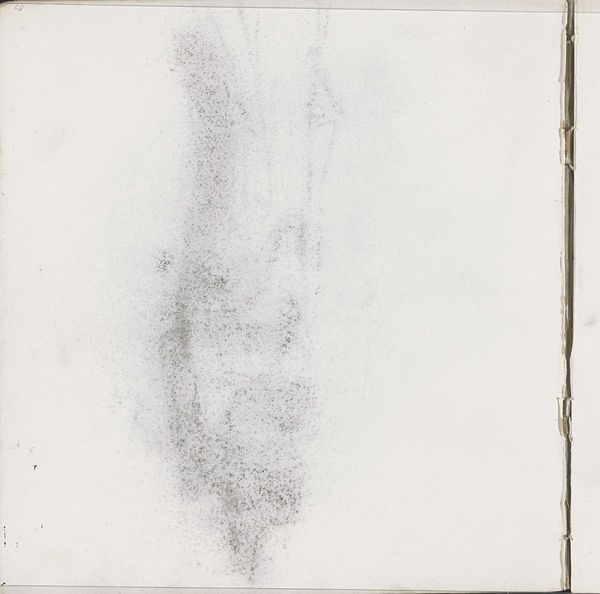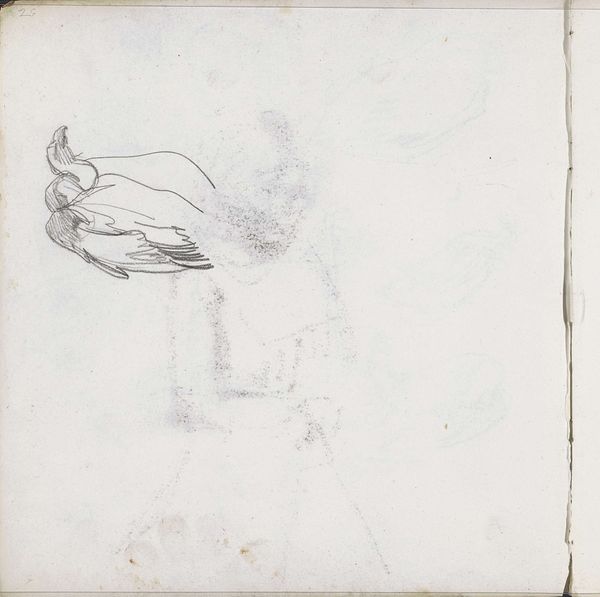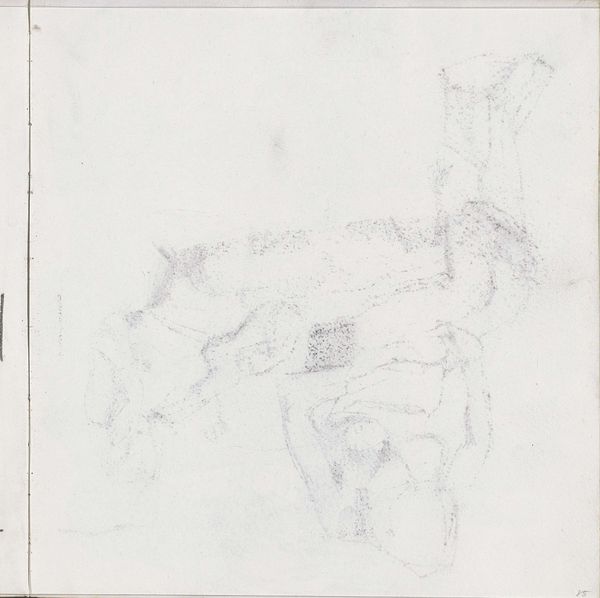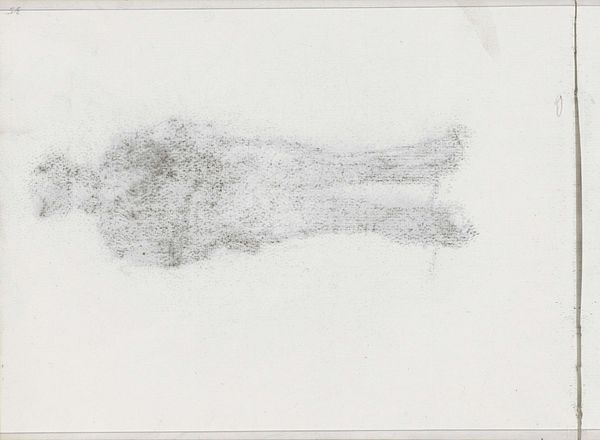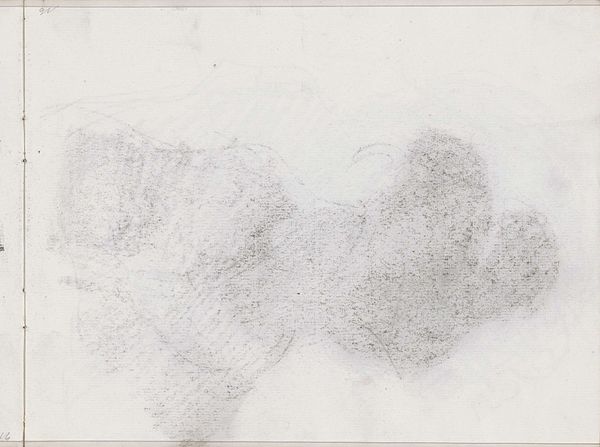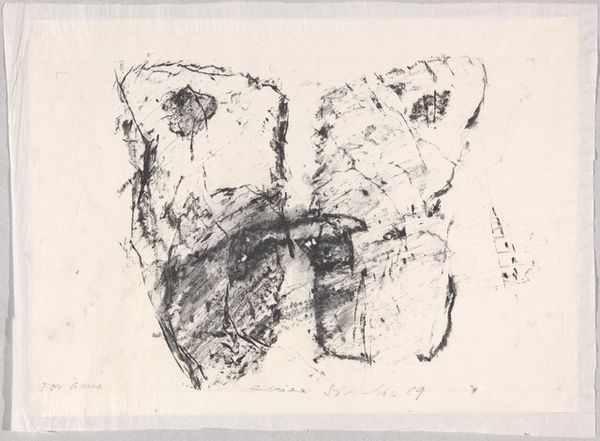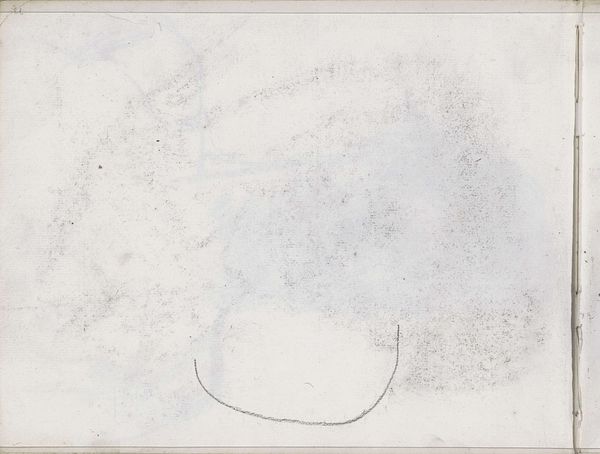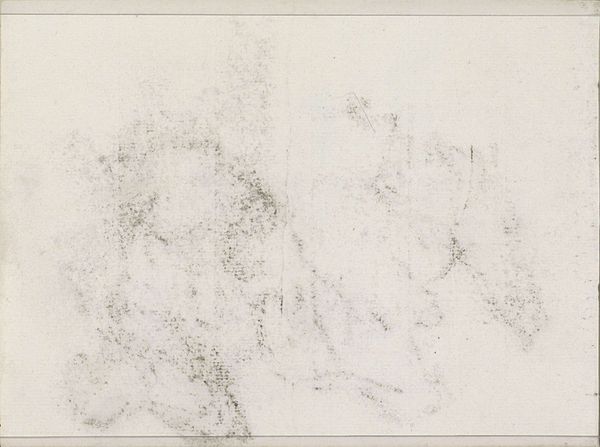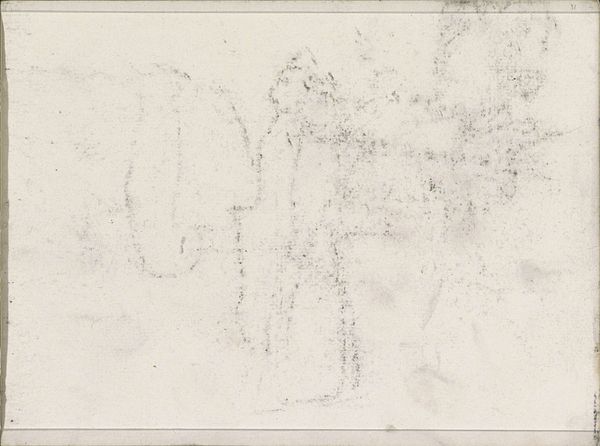
drawing, pencil, graphite
#
pencil drawn
#
drawing
#
pencil sketch
#
abstract
#
pencil
#
graphite
#
pencil work
Copyright: Rijks Museum: Open Domain
Curator: This delicate work is titled "Abklatsch van de krijttekening op blad 18 verso", made sometime between 1875 and 1934 by Isaac Israels. It's currently held at the Rijksmuseum. The materials are humble: primarily pencil and graphite on paper. Editor: My immediate impression is ghostly. It seems less like a drawing and more like a faint memory, like something glimpsed in a dream before it vanishes completely. Curator: Precisely! Israels, within the socio-political currents of his time, was actively dismantling notions of fixed representation. This piece, like many of his works, questions traditional power structures inherent in portraiture, for example, especially considering issues of class and visibility. The ephemeral quality reflects the transient nature of the subjects he often depicted. Editor: It’s the *process* that fascinates me. You can almost see the residue of the act of creation. The graphite seems almost smudged onto the page rather than carefully applied. It’s not trying to hide its construction. I am sure it involved an under drawing; I bet the layering and erasure contribute significantly to this very tangible presence. Curator: And consider this "blot" in terms of gender. During that era, female figures were constantly defined and confined by strict societal norms. An unfinished portrait—a 'blot' in the conventional sense—becomes an act of resistance, liberating the subject from rigid definitions. Editor: The inherent materiality reveals a different sort of 'labor' then. The labor not just of creating *an image,* but about revealing the work in plain sight. By calling attention to its physical presence, to the act of *making*, that itself becomes meaning. This abstraction moves beyond mere style. Curator: I agree. And to add: The very incompleteness opens it to multiple interpretations. It allows us, as viewers, to actively participate in the creation of meaning. Who is this figure, how should we place them and ourselves inside art history and beyond? The drawing embodies that sort of freedom and inclusivity that all of his subjects demanded. Editor: So, what starts out looking like a quick sketch actually holds many layers if one looks closer into material and societal context, huh? Curator: Yes, this piece, like so many others of the period, truly challenges us to rethink our understanding of representation and identity, especially from our current moment in time.
Comments
No comments
Be the first to comment and join the conversation on the ultimate creative platform.
